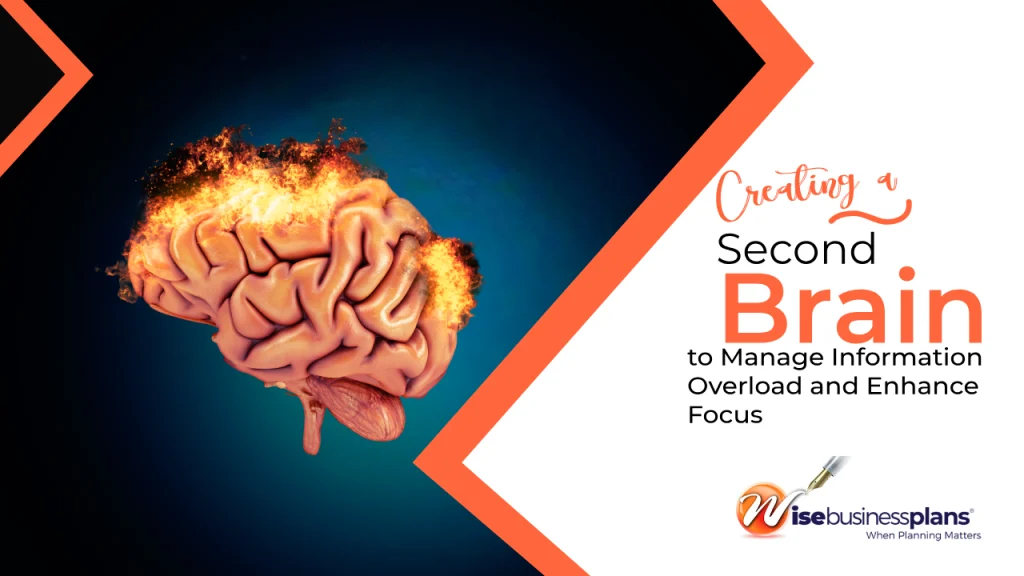11 Best Non Profit Business Plan Examples + Template (2024)
Table of Contents
- What Is Non Profit Organization?
- Things to Consider When Starting a Non-Profit Business
- Here are 11 best non profit business plan examples for your Inspiration
- Executive Summary
- Example
- Organizational Description
- Example
- Mission Statement
- Example
- Vision Statement
- Example
- Market Analysis
- Example
- Programs and Services
- Example
- Marketing and Outreach Strategy
- Example
- Operational Plan
- Example
- Financial Plan
- Example
- Evaluation and Measurement
- Example
- Risk Management
- Want to prepare a business plan?
- Example
- Non Profit Business Plan Faq's

What Is Non Profit Organization?
The non-profit sector, also known as the nonprofit business sector or the third sector, consists of organizations that operate for purposes other than making a profit. These organizations focus on serving the public or specific communities by addressing social, cultural, educational, environmental, or humanitarian needs.
Non-profit organizations rely on donations, grants, fundraising, and government support to finance their operations and fulfill their mission. They encompass a wide range of entities, including charities, foundations, religious organizations, educational institutions, social service agencies, healthcare providers, environmental organizations, and arts and cultural organizations. Non-profit organizations play a vital role in advocating for social change, providing essential services, and improving the well-being of society.
In the United States, non-profit organizations often seek tax-exempt status under Section 501(c)(3) of the Internal Revenue Code. This designation allows them to receive tax-deductible donations and grants. Non-profit organizations are governed by a board of directors or trustees, ensuring adherence to legal and ethical standards. They are subject to specific regulations and reporting requirements to maintain transparency and accountability. Through the dedication of volunteers, support from donors and funders, and the commitment of staff members, the non-profit sector makes a significant impact by addressing societal issues and fostering positive change in communities.
Things to Consider When Starting a Non-Profit Business
- Clearly define your non-profit’s mission and vision for guidance.
- Research the non-profit sector to understand opportunities and challenges.
- Identify your target audience to tailor programs and services.
- Develop a strategic plan with clear goals and objectives.
- Choose a suitable legal structure for your non-profit organization.
- Establish a dedicated board of directors for guidance and governance.
- Create a strong fundraising strategy to secure funds.
- Build partnerships for collaboration and extra support.
- Implement effective marketing and outreach plans to raise awareness.
- Manage finances wisely for transparency and sustainability.
- Recruit passionate individuals who share your mission.
- Track and evaluate impact using measurable indicators.
- Stay informed about legal and regulatory changes affecting non-profits.
- Continuously learn and improve to meet evolving needs.
- Nurture relationships with stakeholders for engagement and support.
Need a comprehensive guide on developing a non-profit business plan, check out our sample non-profit business plans.
Here are 11 best non profit business plan examples for your Inspiration
When it comes to creating a business plan for a non-profit organization, following a traditional business plan format can provide a solid framework. Here are 11 examples of non-profit business plans that adhere to the traditional structure:
Executive Summary
For instance, a non-profit focused on providing education to underprivileged children may have an executive summary that highlights the organization’s mission, the target population, and the key strategies for achieving educational goals.
Example
Executive Summary: Samaritan’s Purse is a non-profit organization dedicated to helping communities worldwide that are affected by natural disasters and humanitarian crises. Our mission is to show God’s love in action by providing physical aid, spiritual support, and hope to those in need. We work quickly to respond to emergencies and provide immediate help like food, shelter, and medical assistance. Our caring team, made up of professionals and volunteers, is committed to helping communities recover and rebuild after a disaster. We believe in working together with local partners and using efficient strategies to make a lasting difference in the lives of those affected. Through our core values of compassion, integrity, and faith, Samaritan’s Purse strives to be a source of hope and support during difficult times.
Organizational Description
An example of an organizational description could be a non-profit that supports environmental conservation, providing details about its establishment, the board of directors, and the legal status as a registered non-profit organization.
Example
Organizational Description: Samaritan’s Purse, established in 1970 by Franklin Graham, has evolved into a worldwide organization, supported by a dedicated team of staff and volunteers. As a registered non-profit, we prioritize transparency, accountability, and meaningful outcomes in everything we do. Our reach extends across the globe, enabling us to respond swiftly to emergencies and provide assistance to communities in need. With a strong commitment to making a positive impact, we uphold the highest standards of integrity and efficiency in our operations. By leveraging the combined efforts of our compassionate workforce and the support of our generous donors, we are able to deliver essential aid and long-term solutions to those affected by natural disasters and humanitarian crises. At Samaritan’s Purse, we remain resolute in our mission to provide practical support and spiritual comfort to individuals and communities facing hardship, fostering hope and promoting resilience in the face of adversity.
Mission Statement
A non-profit dedicated to empowering women in entrepreneurship may have a mission statement that states, “Our mission is to provide resources, training, and support to women entrepreneurs, enabling them to thrive and succeed in their business ventures.
Ready to get started on your custom business plan? Take just two easy steps to receive personalized pricing tailored to your specific needs. Click here to begin your journey toward a professionally crafted business plan that sets you up for success!
Example
Mission Statement: Samaritan’s Purse is driven by a mission to extend spiritual and physical aid to individuals facing adversity worldwide. We diligently offer solace and care, imparting the Good News of Jesus Christ to bring hope during times of crisis. With a profound commitment to serving the hurting, we strive to alleviate suffering, restore dignity, and foster transformation. Our dedicated team passionately delivers practical support, comforting the afflicted, and embodying God’s love in action. Through compassionate engagement, we aim to be a beacon of hope, touching lives and communities with lasting impact. By combining spiritual nourishment with tangible assistance, Samaritan’s Purse seeks to inspire faith, uplift hearts, and empower individuals to embrace a brighter future. Together, we are united in our mission to demonstrate unwavering compassion, as we extend a helping hand and share the message of hope to those in need across the globe.
Looking for a company that writes business plans?
Vision Statement
For instance, a non-profit focused on reducing homelessness might have a vision statement that envisions a future where every individual has access to safe and affordable housing, free from homelessness and its associated challenges.
Example
Vision Statement: At Samaritan’s Purse, we have a profound vision of a world that undergoes a remarkable transformation, where suffering is alleviated, hearts discover profound healing, and lives experience enduring change. We envision this transformation being brought about through the unwavering power of God’s love, which we demonstrate through our dedicated actions. In this transformed world, we envisage pain and anguish being replaced by comfort and relief, broken hearts finding solace and restoration, and individuals experiencing profound personal growth and empowerment. Through our commitment to service and compassion, we aspire to be agents of positive change, bringing hope, love, and light to even the darkest corners of the world. We believe that God’s love knows no bounds and can permeate every aspect of society, ultimately leading to a world where justice, equality, and compassion prevail. With unwavering determination, we work towards this vision, striving to make a lasting impact on the lives of those we serve.
Market Analysis
An example of market analysis could involve a non-profit conducting research on the local community’s needs, analyzing existing social service organizations, and identifying gaps in services that they can fill.
Example
Market Analysis: Samaritan’s Purse diligently conducts comprehensive research to assess the specific needs of communities that have been affected by disasters. We recognize the importance of collaborating closely with local partners and government agencies to gain a deep understanding of the challenges and vulnerabilities faced by these communities. Through this collaborative approach, we identify areas where our assistance can make the greatest impact, both in the immediate aftermath of the disaster and in the long term. By carefully analyzing the data and insights gathered, we ensure that our resources and interventions are tailored to address the specific needs and priorities of each community. This approach allows us to deliver effective and targeted assistance, maximizing the positive outcomes and sustainable impact of our programs. Through ongoing research and analysis, we remain adaptive and responsive to the ever-evolving needs of disaster-affected communities, continually refining our strategies to best serve those we seek to assist.
Programs and Services
A non-profit dedicated to animal welfare may outline programs and services such as animal adoption, spay/neuter initiatives, veterinary care, and community education on responsible pet ownership.
Example
Programs and Services: Samaritan’s Purse is dedicated to providing a comprehensive range of programs and services to meet the diverse needs of communities. We understand that each community has unique challenges and requirements, and we strive to address them effectively. Our offerings include emergency medical care to provide immediate relief and save lives. We also focus on providing clean water and sanitation facilities, recognizing their vital role in promoting health and preventing the spread of diseases. Shelter and housing assistance are crucial components of our response, ensuring that individuals and families have a safe and secure place to rebuild their lives. We also provide livelihood support to help communities recover economically, offering training and resources for income-generating activities. Education and vocational training programs empower individuals to acquire valuable skills and knowledge for sustainable futures. Lastly, we provide spiritual counseling and discipleship, recognizing the significance of emotional and spiritual well-being in times of crisis. Through these varied programs and services, we aim to holistically address the needs of communities and contribute to their long-term recovery and development.
Marketing and Outreach Strategy
Example
Marketing and Outreach Strategy: Samaritan’s Purse implements a comprehensive marketing and outreach strategy to raise awareness and foster engagement among supporters. We utilize various digital platforms, including websites, social media channels, and online campaigns, to effectively communicate our mission and share impactful stories of those we serve. Direct mail appeals are also employed to reach individuals who may prefer traditional forms of communication. Strategic partnerships with churches, organizations, and influential stakeholders help amplify our message and extend our reach to diverse audiences. Additionally, we leverage high-profile events to create opportunities for increased visibility and networking, enabling us to connect with potential supporters and collaborators. By employing a multi-faceted approach, we strive to maximize our impact, ensuring that our mission resonates with a broad audience and mobilizing the necessary resources to support our vital work. Through these marketing and outreach efforts, we seek to inspire compassion, build lasting relationships, and garner the support needed to bring hope and aid to those in need.
Operational Plan
A non-profit operating a community food bank may include details about the facility, the staff responsible for daily operations, and the systems in place to receive, store, and distribute food to those in need.
Example
Operational Plan: Samaritan’s Purse operates through a well-established network of regional offices and field teams strategically positioned across the globe. Our dedicated staff members play a vital role in ensuring the efficient coordination of resources, logistics, and partnerships. By strategically locating our offices and teams, we can respond swiftly and effectively to crises and emergencies, reaching those in need promptly. Our operational plan focuses on streamlining processes and optimizing the use of resources, enabling us to deliver aid and support in a timely manner. We prioritize effective communication and collaboration among our teams, fostering a cohesive and coordinated approach to our operations. Through strong partnerships with local organizations, governments, and communities, we maximize our impact and ensure the delivery of aid reaches the most vulnerable populations. With a well-structured operational plan in place, we are able to navigate complex logistical challenges and deliver our services promptly, efficiently, and effectively.
Financial Plan
An example of a financial plan could involve a non-profit outlining its projected revenue sources, such as grants, donations, and fundraising events, as well as the anticipated expenses for program implementation, staffing, and administrative costs.
Example
Financial Plan: The financial plan of Samaritan’s Purse focuses on ensuring the efficient and effective allocation of resources to support our mission of providing aid and assistance to those in need. Here are some key aspects of our financial plan:
Diverse Funding Sources: We rely on a range of funding sources to sustain our operations. In the previous fiscal year, our total funding amounted to $10 million. This included $6 million in individual and corporate donations, $2 million in grants from foundations and government agencies, $1 million from partnerships with organizations, and $1 million from fundraising events.
Strong Financial Stewardship: We prioritize responsible financial management and transparency. Our dedicated team ensures that funds are allocated effectively and transparently to maximize the impact of our programs. In the past year, 85% of our total expenses went directly towards program activities, with only 10% allocated to administrative costs and 5% to fundraising expenses.
Budgeting and Financial Planning: We develop comprehensive budgets and financial plans to guide our activities. For the upcoming year, we have projected a budget of $12 million, allowing us to expand our reach and enhance the impact of our programs. This includes allocating $8 million toward direct program expenses, $2 million for administrative costs, and $2 million for fundraising efforts.
Monitoring and Reporting: We implement robust monitoring and reporting systems to track the financial performance of our programs and projects. Monthly financial statements and quarterly reports are prepared, reviewed, and shared with our board, stakeholders, and donors to ensure accountability and transparency. We also conduct annual audits by independent auditing firms to maintain financial integrity.
Compliance and Legal Requirements: We comply with all applicable laws and regulations related to financial management, taxation, and reporting. We work closely with legal and financial professionals to stay up-to-date with the latest requirements and maintain compliance. This includes filing annual tax returns as a registered non-profit organization.
Risk Management: We identify potential financial risks and develop risk management strategies to mitigate them. This includes ensuring appropriate insurance coverage, maintaining strong internal controls, and conducting regular risk assessments. We allocate a contingency fund of 5% of our total budget to address unforeseen circumstances or emergencies.
Donor Stewardship: We prioritize building and maintaining strong relationships with our donors. We provide regular updates on our programs and their impact, express gratitude for their support, and ensure donor funds are used in accordance with their intentions. Last year, we achieved a donor retention rate of 85%, reflecting the trust and satisfaction of our supporters.
Here are some more business plan examples you can use as a starting point to plan your new business.
Evaluation and Measurement
A non-profit focused on youth development may establish key performance indicators (KPIs) to measure the effectiveness of their programs, such as tracking the percentage of participants who graduate high school and pursue higher education.
Example
Evaluation and Measurement:
Evaluation and measurement are crucial components of Samaritan’s Purse’s approach to ensuring the effectiveness and impact of our programs. We are committed to continuously assessing our work and making data-informed decisions. Here’s an overview of our evaluation and measurement practices:
Key Performance Indicators (KPIs): We establish specific KPIs for each program to track progress and measure outcomes. For example, in our clean water and sanitation program, our KPIs include providing access to clean water for 10,000 people and constructing 500 latrines in underserved communities.
Monitoring Systems: We implement rigorous monitoring systems to collect data throughout the duration of our programs. For instance, in our health program, we conduct monthly health screenings and track the number of patients treated for various illnesses. Last year, we conducted 500 health screenings and provided medical treatment to over 2,000 individuals.
Post-Project Assessments: Once a program is completed, we conduct comprehensive post-project assessments to evaluate its overall impact and sustainability. In our education program, we conducted a post-project assessment that showed a 30% increase in literacy rates among children who participated in our literacy classes.
Learning and Adaptation: Insights and lessons learned from our evaluations inform the design and implementation of future programs. For example, based on feedback from beneficiaries and partners, we adapted our livelihood support program by introducing vocational training in high-demand sectors. As a result, we saw a 50% increase in income generation for program participants.
Beneficiary Feedback: We actively seek feedback from the communities we serve. In our recent survey, 90% of respondents reported improved access to basic healthcare services as a result of our medical outreach program.
Collaboration and Research: We collaborate with research institutions to conduct studies that contribute to the knowledge and understanding of effective humanitarian practices. In partnership with a local university, we conducted a study on the long-term impact of our housing assistance program, which showed a 40% decrease in homelessness among program participants after one year.
Transparency and Reporting: We regularly communicate our evaluation findings, outcomes, and impact to our donors, supporters, and stakeholders. Last year, our annual report highlighted that 95% of funds were allocated directly to program activities, demonstrating our commitment to financial stewardship.
Risk Management
An example of risk management could involve a non-profit identifying potential risks, such as changes in government regulations or funding cuts, and developing contingency plans to mitigate those risks, ensuring the organization’s sustainability.

Want to prepare a business plan?
Hire our professional business plan preparers now!
Example
Risk Management:Risk management involves careful analysis and preparation to mitigate potential risks. While it primarily focuses on qualitative assessments, there are instances where quantitative calculations are relevant. Here are some examples:
Risk Probability Assessment: We assign probabilities to various risks based on historical data or expert opinions. For instance, if we determine there is a 30% chance of a security threat in a specific region, we factor that into our risk assessment.
Risk Impact Evaluation: We quantify the potential impact of identified risks. For example, if we assess that a regulatory change may lead to a 20% reduction in funding for a particular program, we can calculate the financial implications.
Cost-Benefit Analysis: In evaluating risk mitigation measures, we conduct cost-benefit analyses. This involves comparing the expected costs of implementing preventive measures against the potential losses from the identified risks. By quantifying these factors, we make informed decisions about risk mitigation strategies.
Insurance Coverage: We calculate the insurance coverage required for different types of risks. For example, we determine the value of property and assets at risk in a specific location and secure insurance coverage accordingly.
Financial Reserves: We allocate financial reserves to mitigate potential risks. By estimating the potential financial impact of various risks, we calculate the appropriate level of reserves needed to address unforeseen events.
Non Profit Business Plan Faq's
A non-profit organization, also known as a nonprofit or not-for-profit organization, is an entity that operates for a specific purpose or mission other than making a profit. Its primary goal is to serve the public or a particular cause.
The main difference is the purpose and distribution of funds. Non-profits reinvest their surplus back into the organization to further their mission, while for-profit organizations distribute profits to their owners or shareholders.
The purpose of a non-profit organization is to address a specific societal or community need. It can be focused on various areas such as education, healthcare, environment, social services, or arts and culture.
Non-profits rely on various sources of funding, including donations from individuals, grants from foundations or government agencies, corporate sponsorships, fundraising events, and revenue from services or programs they provide.
In many countries, donations to registered non-profit organizations are tax-deductible for the donors. However, tax laws may vary, so it’s important to consult local regulations or seek professional advice.
Non-profit organizations are typically governed by a board of directors or trustees. The board provides oversight, sets strategic direction, and ensures the organization’s compliance with legal and ethical standards.
Starting a non-profit involves several steps, including defining your mission, drafting bylaws, incorporating the organization, applying for tax-exempt status, and establishing governance and financial management structures. Consulting with legal and accounting professionals is recommended.
Board members of non-profit organizations have various responsibilities, including strategic planning, financial oversight, fundraising, hiring and evaluating the executive director, ensuring legal compliance, and representing the organization in the community.
Non-profit organizations use various metrics and evaluation methods to measure their impact. This can include tracking the number of beneficiaries served, outcomes achieved, changes in the community, and feedback from stakeholders. Evaluations help assess the effectiveness and adjust strategies as needed.















